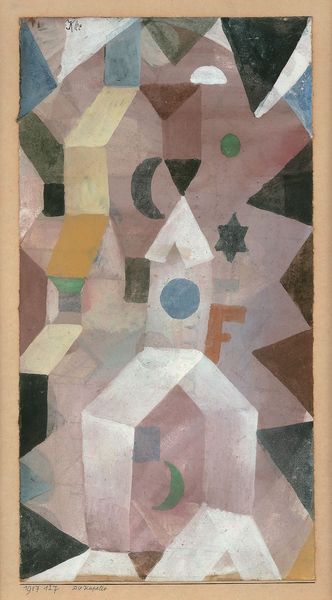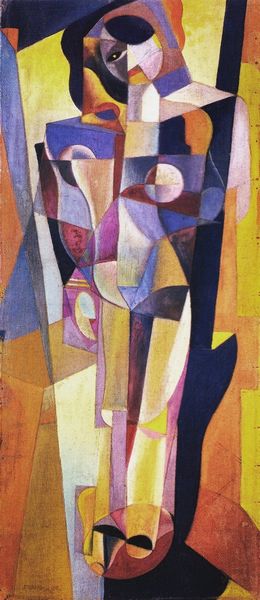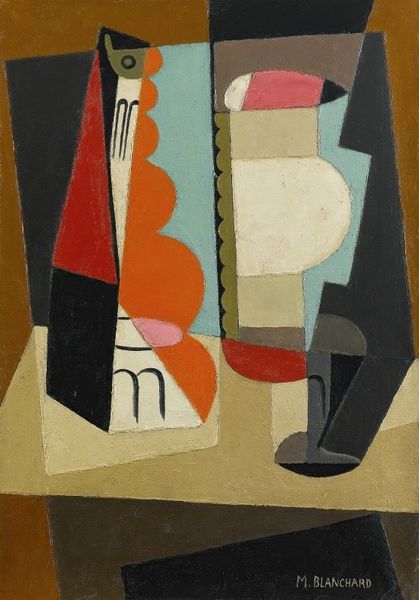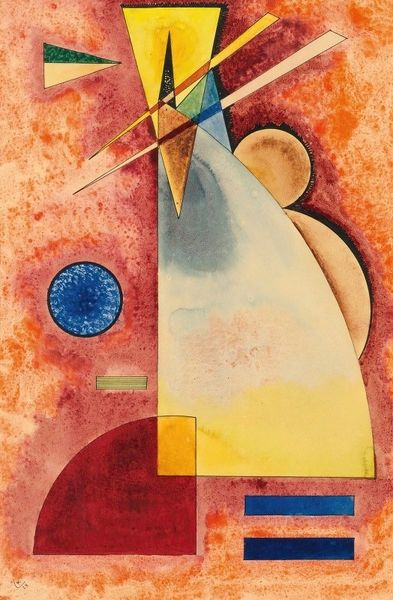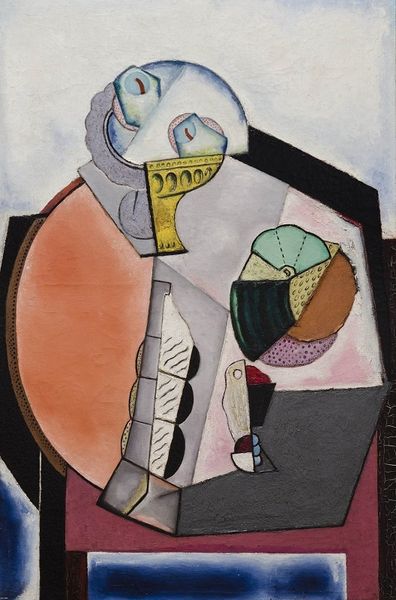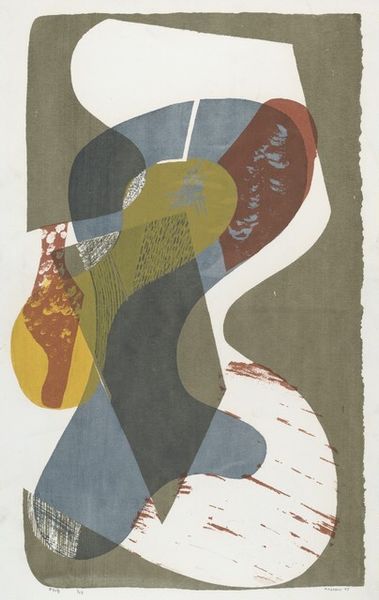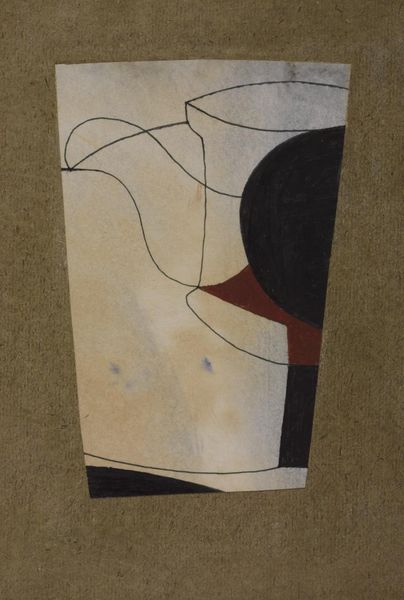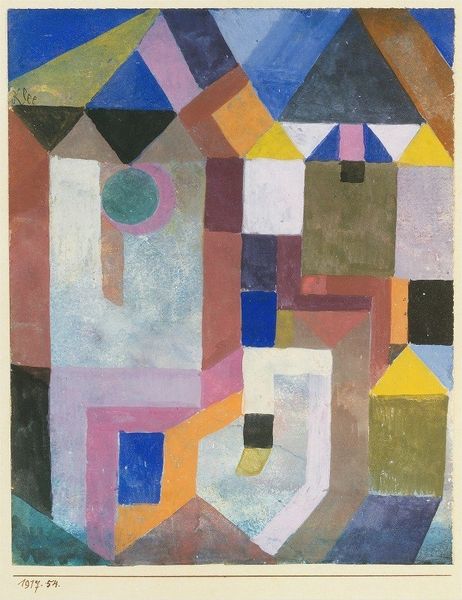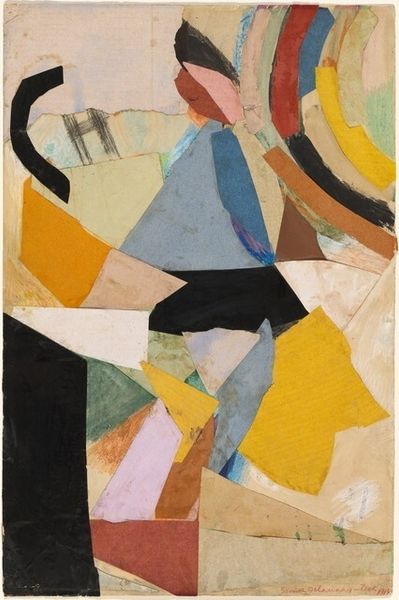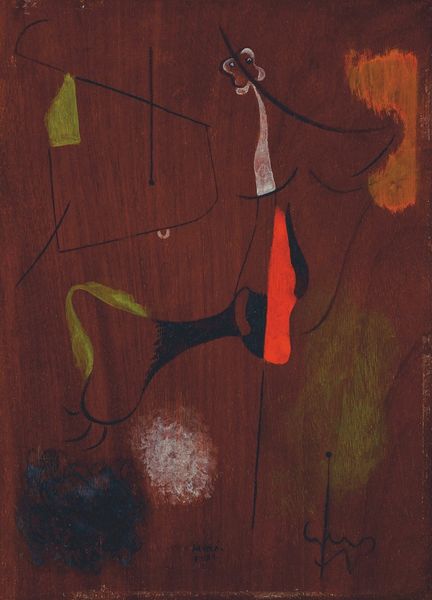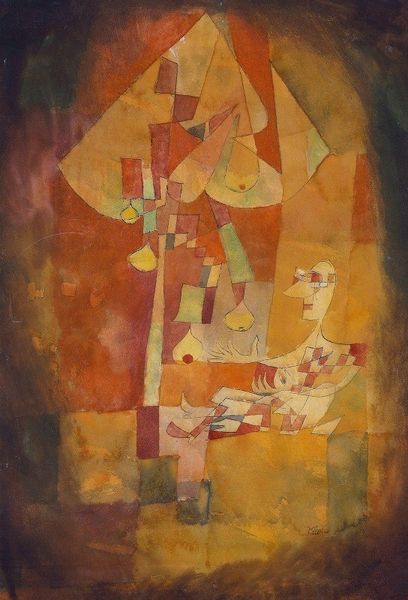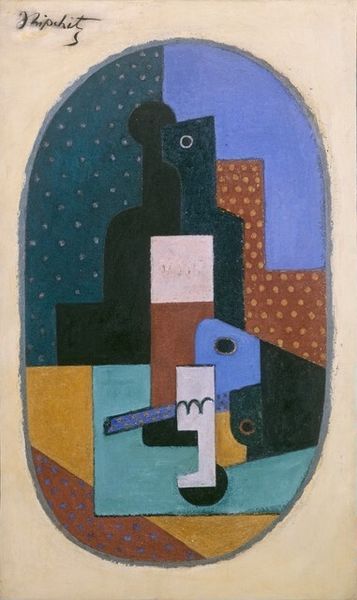
painting, watercolor
#
water colours
#
painting
#
figuration
#
abstract
#
form
#
watercolor
#
geometric
#
expressionism
#
line
#
symbolism
#
watercolor
Copyright: Public Domain: Artvee
Curator: We're looking at Paul Klee's 1917 watercolor, "Persische Nachtigallen," or "Persian Nightingales." Editor: My first impression? Dreamlike. Ethereal even. The soft watercolor palette and floating shapes evoke a sense of melody and nocturnal wonder. It feels less about literal birds and more about… a feeling. Curator: Indeed. Klee's engagement with color theory is key here. Consider the layering and translucency achieved through watercolor, built up carefully on the paper’s surface to modulate hue. It invites scrutiny of the artist’s hand, the way he coaxed color from the pigments to describe imagined birds. Editor: For me, the symbolic language is what really sings. Stars, crescent moons, even simplified rose motifs… These aren't just pretty shapes; they feel loaded with cultural memory. Klee taps into something ancient and cross-cultural, a shared visual vocabulary for dreams and longing. Those nightingales perched on these geometric forms appear to sing songs of the cosmos, almost alchemical. Curator: He wasn't simply borrowing established visual codes, though. Klee distilled forms, embracing abstraction to construct an imaginative ecosystem of material components and modes of application. Notice how line work, color wash, and areas of untouched paper are arranged, coexisting materially but distinct formal contributions? Editor: Perhaps. I am fascinated by his choice of motifs and arrangements. What made him select a Persian theme in 1917, amidst the tumult of World War I? Was it escapism, a longing for a different world conveyed via potent symbolic language? Or could it even hint at an undercurrent of political critique communicated indirectly through a universal language of symbols? Curator: Given Klee’s connection to Der Blaue Reiter and his focus on expressing the spiritual in art through unconventional techniques, his choice of this approach reveals the material potential for such exploration in contrast with more figurative forms of artistic production favored during that time. Editor: This conversation has deepened my initial read significantly. The image continues to suggest a sort of inner journey. Curator: I'm left thinking about how the piece exists as an exercise in process that successfully produces a compelling final piece beyond its more obvious and immediate visual qualities.
Comments
No comments
Be the first to comment and join the conversation on the ultimate creative platform.
